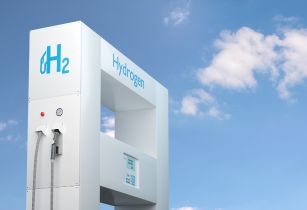In order to develop green hydrogen, Oman is devoting an area the size of Slovakia to solar power projects, according to a research by AGBI
Salim bin Nasser Al Aufi, minister of energy and mining, inked US$20bn in contracts on June 1 to create 500,000 tonnes of green hydrogen annually with partners including BP, Shell, and the recently established Hydrogen Oman (Hydrom).
Hydrom said that "solidified commitments" to projects in the sultanate had increased to US$30bn by 28 July this year. According to AGBI, the production goal is one million tonnes by 2030, three and a half million tonnes by 2040, and eight and a half million tonnes by 2050. By 2030, the sultanate ought to be the sixth-largest exporter of hydrogen worldwide.
According to the International Energy Agency, such shipments are anticipated to account for 80% of Oman's current LNG exports by 2040. They may be worth twice as much by 2050 as the sultanate's present LNG exports to other countries. But there are difficulties with hydrogen. Long-distance petrol transportation is restricted by technical constraints, and rules and international markets are still being developed.
“There’s a lot to do before hydrogen will be up and running and delivering,” Charles Dolphin, a partner in Muscat law firm CMS, told AGBI. This uncertainty is reflected in the wide range of approaches that have been taken to the gas in the Gulf.
“Other Gulf states are taking a more private sector approach,” said Dolphin. “The UAE and Saudi Arabia aren’t seeing so much government involvement, except for some gearing up of renewable energy projects to supply the electrolysers making the hydrogen.”
According to S&P, Oman's resolve to go green may be partially attributed to the country's possession of some of the best renewable energy resources in the world. According to global energy transition writer James Burgess, the sultanate benefits from high irradiance—the electricity per unit area obtained from the sun—a favourable wind profile, and a strategic position. It is hence ideal for producing green hydrogen when combined with huge areas of free and underused land.
The majority of the hydrogen produced will be used for export because of the comparatively high cost of the petrol in comparison to the enormous amounts of inexpensive renewable energy that are about to become accessible, as well as Oman's relatively tiny population and economy.
This necessitates confronting the transportation issue. One option is to transform it into hydrogen-heavy ammonia for tanker transportation. At its final destination, it is changed back into hydrogen. Yet, “while ammonia is definitely seen as the vector for transport at the moment, there are conversion losses at every step of this process,” said Burgess.
Plus, pricing on a global market scale is also still evolving. “It could evolve like the early LNG market,” said Burgess. “You might see some surplus hydrogen volumes from the big hubs eventually developing into a spot market.” The structure of the sector in the near future may very well depend on local demand. Many of the projects that are being announced have seven-year timeframes that extend all the way to 2030, both in Oman and internationally. Dolphin said, “Maybe, by the time they come online, the market will have matured and the project’s time will have come.”




